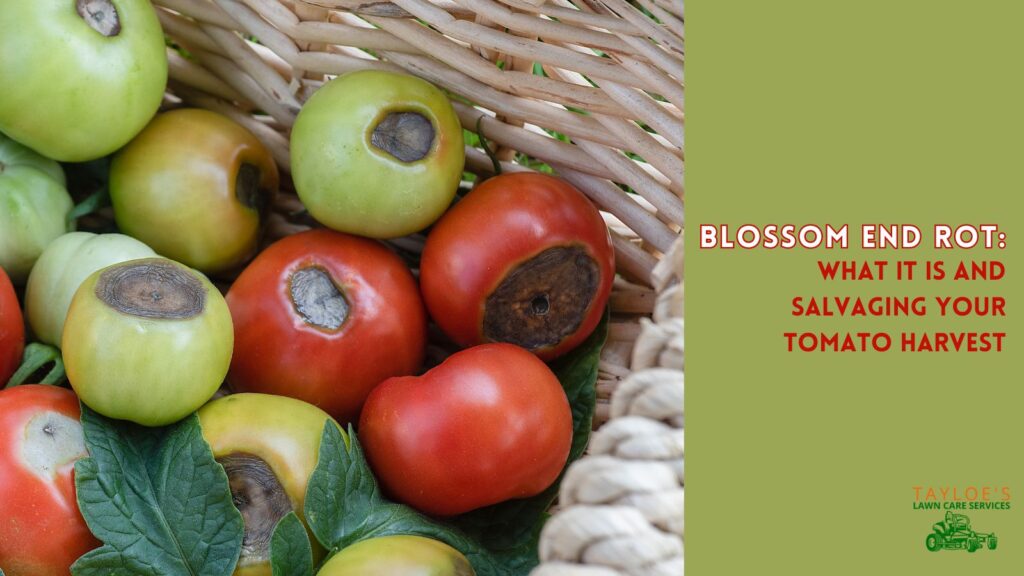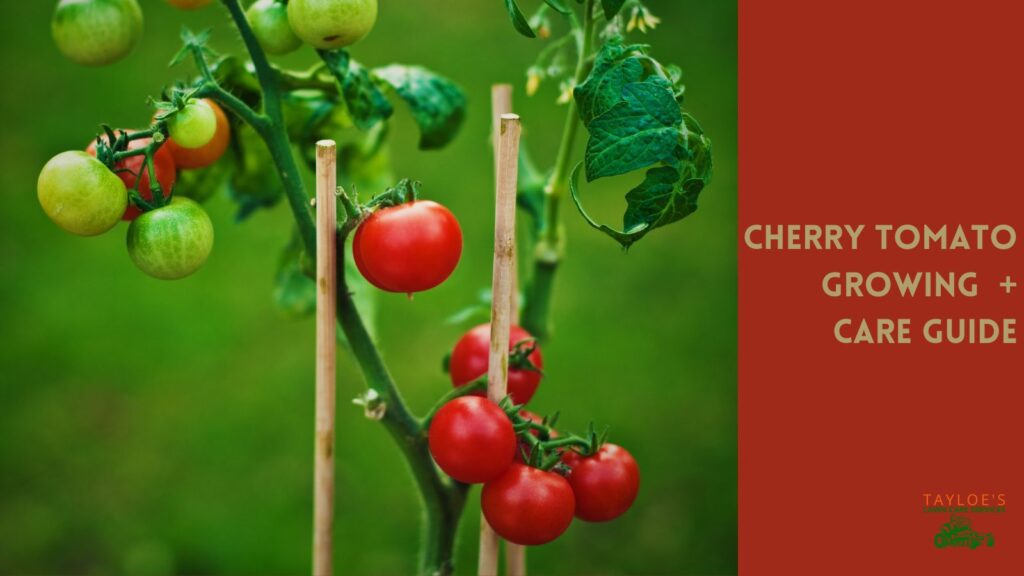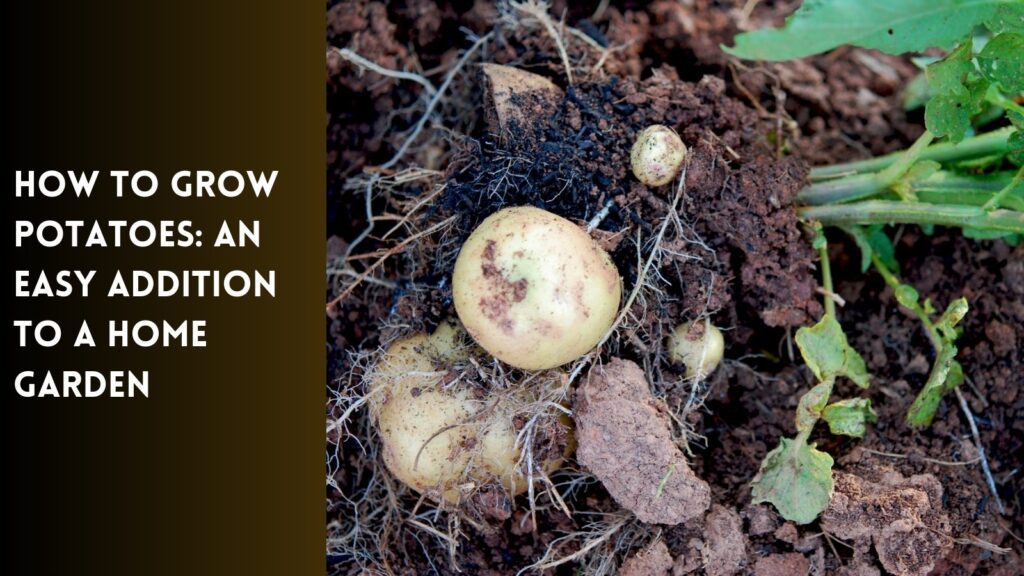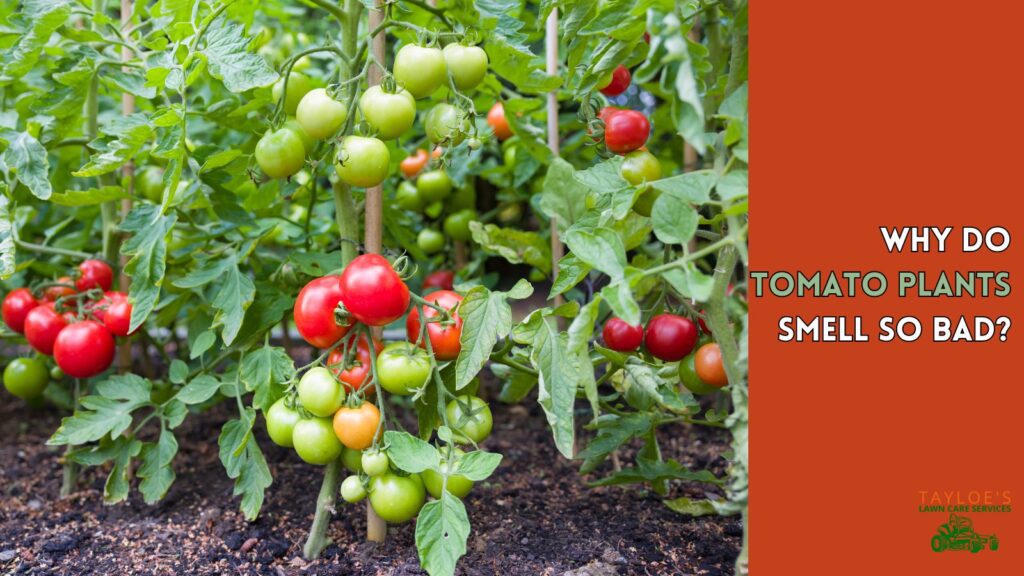Last Updated on: 7th July 2024, 11:03 am
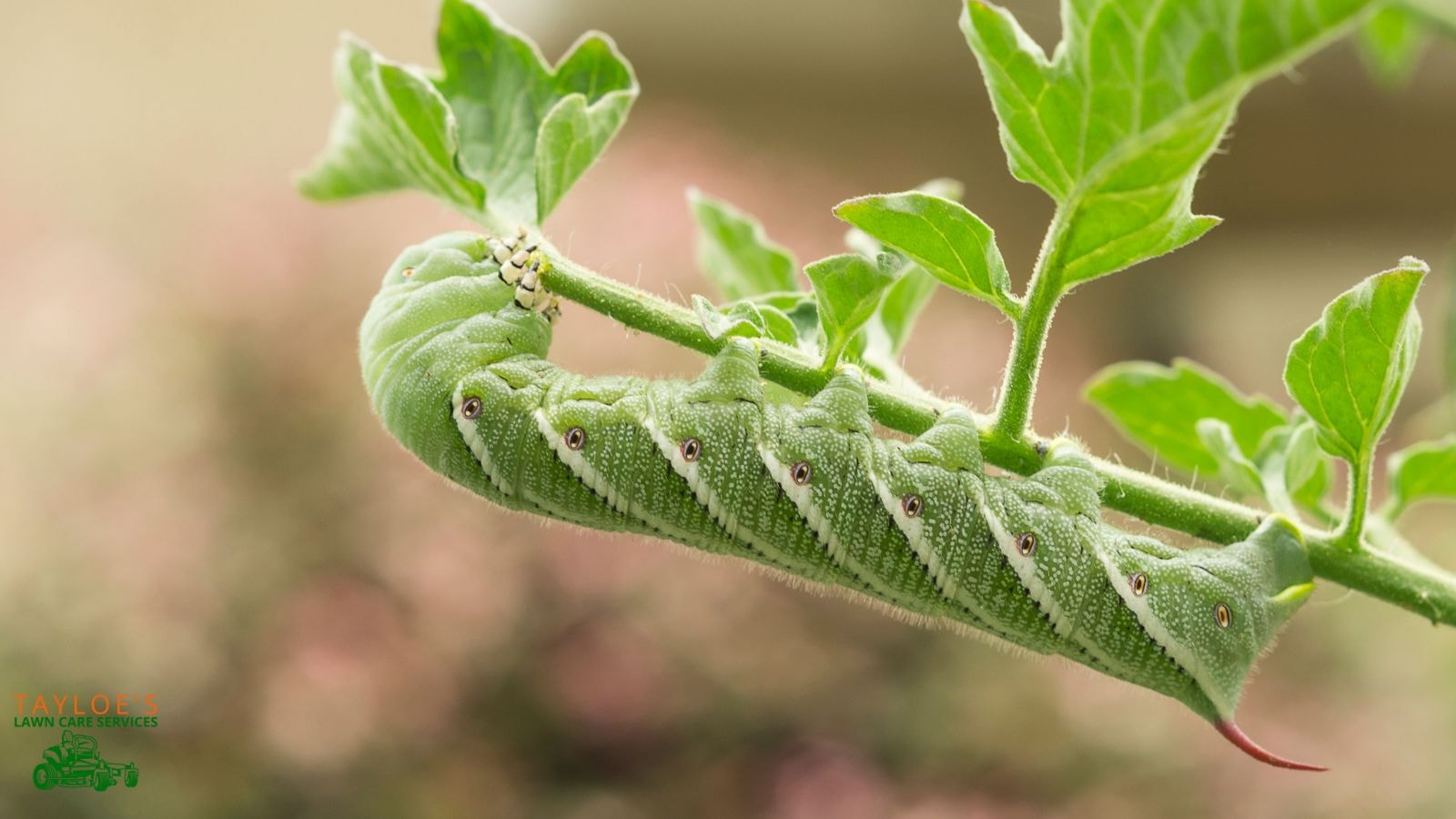
Do you know how to spot tomato hornworms?
The dreaded tomato hornworm. It can wreak havoc on your beautiful tomato plants before you can even enjoy reaping the bounty of all that hard work. If you’ve been spotting these large caterpillars as they feed on your tomatoes before you even get a bite, you’re not alone.
Tomato hornworms are among the most destructive pests for tomato plants, capable of causing significant damage in a short amount of time. The hornworm caterpillar has a voracious appetite and can quickly defoliate a tomato plant, leading to decreased fruit production and even plant death if left unchecked.
By the end of this article, you’ll have a comprehensive understanding of tomato hornworms, the damage they cause, and how to differentiate them from tobacco hornworms. You’ll also know about some coping strategies to help reduce the damage.
What Are Tomato Hornworms?
Tomato hornworms are the larval stage of the five-spotted hawk moth (Manduca quinquemaculata). These caterpillars are typically green with white and black markings and can grow up to four inches long.
The name “hornworm” comes from the horn-like projection on the caterpillar’s rear end. Despite their intimidating appearance. Hornworms are not harmful to humans but destroy a tomato plant in a quick time.
Life Cycle of Tomato Hornworms (Adults AKA Hummingbird Moth
Understanding the life cycle of the tomato horn worm, commonly referred to as tomato worms, is crucial for effective management. The life cycle begins when the adult hawk moth lays eggs on the undersides of tomato leaves. Look for the white cocoons in the early spring.
These caterpillars hatch in approximately one week. Next, grow rapidly through several growth stages from caterpillar larvae to pupal stage, which takes about three to four weeks (late spring).
During this time, they consume large amounts of foliage. After reaching full size, the larvae drop to the soil, where they pupate. After about 8 weeks, adult moths emerge, lay eggs, and begin the cycle again – usually in the early summer.
While hummingbird moths will give birth to more damaging hornworms, it’s also fair to note that the adult moths are important pollinators that can help other plants stay healthy.
Identifying Tomato Hornworm Damage
Tomato hornworm damage is often easy to spot due to the caterpillars’ large size and the severity of the damage they cause. Key signs of an infestation include:
Defoliation: Tomato hornworms consume host plant leaves, often leaving behind only the midribs.
Fruit Damage: In addition to the leaves and stems of host plants, hornworms species feed on both green and ripe tomatoes.
Frass: The presence of dark green or black droppings, known as frass, on leaves or the ground beneath plants.
Stripped Stems: In severe infestations, the stems of tomato plants can be stripped of foliage.
These insects will happily lay eggs and feast on tomatoes and tobacco plants as well as other plants in the nightshade family, including potatoes, eggplant, and bell peppers.
Differentiating Tomato Hornworms from Tobacco Hornworms
While tomato hornworms are a major pest for tomato plants, they are often confused with tobacco hornworms (Manduca sexta). Both species are similar in appearance and are closely related, but there are key differences between the two species:
Markings: Both have white stripes but with some differences on the hornworm’s body if you look closely. Tomato hornworms have eight white V-shaped markings along their sides. On the other hand, tobacco hornworms have seven white diagonal lines.
Horns: The horn on a tomato hornworm is typically dark blue or black, whereas the tobacco hornworm sports a red horn.
Host Plants: Of course, both pale green to medium green caterpillars will feed on tomato plants. However, the tobacco hornworm is more commonly found in tobacco plants.
Climate Preference: The tomato hornworm is found throughout most of the United States. However, the tobacco hornworm prefers warmer climates and flourishes in the southern states.
Control and Management of Tomato Hornworms
Managing tomato hornworms involves a combination of cultural, chemical, and biological control methods. Here are some effective strategies:
Row Covers as Physical Barriers: Using row covers can help to prevent the adult moths from laying eggs on your tomatoes or other plants. A drawback – you will need to remove the covers as the plat starts to bud to allow for pollination.
Handpicking: Handpicking hornworms off plants can be an effective control method for small gardens. Wear gloves, remove the caterpillars, and dispose of them. They look terrifying, but they don’t bite humans.
Garden Insects That Are Natural Enemies: Introducing natural predators, such as the braconid wasp, can help control hornworm populations. The adult wasps lay their eggs on hornworms, and the wasp larvae consume the caterpillars from the inside out. Other beneficial insects that can help control the small caterpillars include green lacewings.
Insecticides: If infestations are severe, insecticides such as Bacillus thuringiensis (Bt) or insecticidal soap can be used. Bt is a naturally occurring bacterium toxic to caterpillars but safe for humans and other animals. Insecticidal soap can effectively control smaller, soft-bodied insects that might accompany hornworm infestations.
Crop Rotation: Rotating crops and avoiding planting tomatoes in the same location year after year can help reduce the likelihood of hornworm infestations.
Preventing Tomato Hornworm Infestations
Prevention is always better than cure when it comes to managing destructive garden pests. Here are some preventive measures to consider:
Regular Inspections: Inspecting nightshade plants for signs of hornworm damage can help catch infestations early.
Companion Planting: Planting companion plants such as basil and dill can help deter hornworms and other pests. The marigold is also an excellent companion plant to deter the hornworm population.
Soil Management: Tilling the soil before planting can destroy pupae and reduce the number of emerging moths.
Black Light Traps: Using uv blacklight traps can help monitor and reduce adult moth populations.
The Impact of Tomato Hornworms on Tomato Production
Tomato hornworms can significantly impact tomato production, particularly in commercial operations where large infestations can occur. Losing foliage reduces the plant’s ability to photosynthesize, leading to weaker plants and lower yields. Additionally, damage to the fruit itself can render tomatoes unmarketable.
Integrated Pest Management (IPM) for Tomato Hornworms
An integrated pest management (IPM) approach is often the most effective way to manage tomato hornworm populations. IPM combines multiple strategies to minimize pest damage while reducing the reliance on chemical controls. Key components of an IPM program for tomato hornworms include:
Monitoring: Regular monitoring of plants to detect early signs of infestation.
Thresholds: Establishing action thresholds to determine when control measures are needed.
Cultural Practices: Implementing cultural practices such as crop rotation and companion planting.
Biological Controls: Utilizing natural predators and parasitoids.
Chemical Controls: Applying insecticides judiciously when necessary.
The Takeaway: The Tomato Hornworm Is a Destructive Force for Your Garden
Tomato hornworms are a significant pest for tomato growers, capable of causing extensive damage in a short amount of time. By understanding their life cycle, recognizing the signs of damage, and implementing effective control measures, growers can protect their tomato plants and ensure a healthy, productive harvest.
Differentiating between tomato hornworms and tobacco hornworms is also crucial for accurate identification and management. It is possible to manage these damaging species’ populations effectively and minimize their impact on tomato production through a combination of cultural, biological, and chemical control methods.
By staying vigilant and employing a comprehensive pest management strategy, tomato growers can safeguard their crops against these voracious insects and enjoy a bountiful tomato harvest.
Author Profile

- Deborah Tayloe is the CEO and co-founder of Tayloe's Lawn Care Services, LLC. She has a B.S.Ed and holds certificates in soil and water management and herbology from accredited programs.
Latest entries
 GardeningSeptember 27, 2025What perennials, shrubs, and trees don’t like fall pruning (and why)?
GardeningSeptember 27, 2025What perennials, shrubs, and trees don’t like fall pruning (and why)? Trees and ShrubsSeptember 14, 2025Fall Shrub Pruning Guide (September–October)
Trees and ShrubsSeptember 14, 2025Fall Shrub Pruning Guide (September–October) Trees and ShrubsApril 22, 2025Boxwood Blight: Early identification and isolation
Trees and ShrubsApril 22, 2025Boxwood Blight: Early identification and isolation Flower GardenApril 8, 2025John F. Kennedy Rose: Hybrid tea rose with elegant white blooms
Flower GardenApril 8, 2025John F. Kennedy Rose: Hybrid tea rose with elegant white blooms

